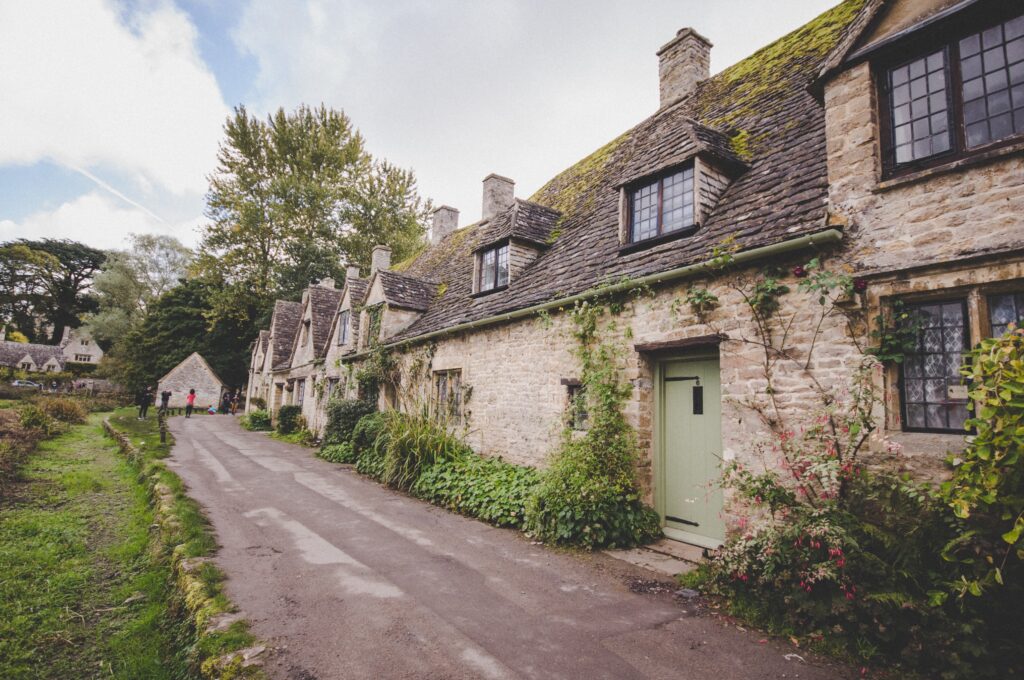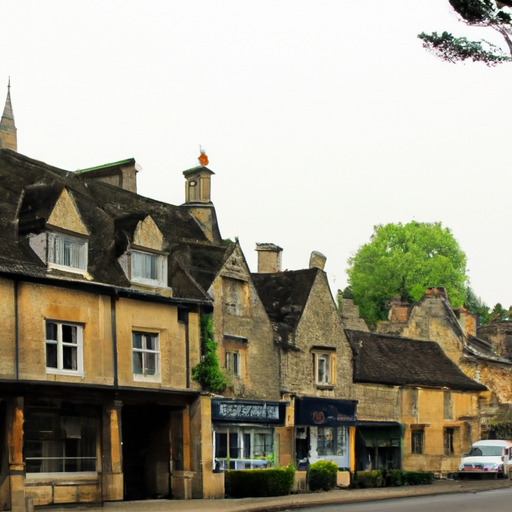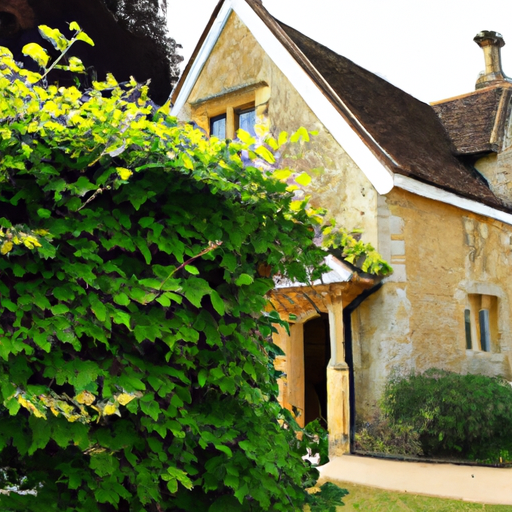You are about to discover the unique charm and timeless beauty of Cotswold stone buildings and architecture. Known for their distinctive golden hue and exquisite craftsmanship, these structures have become iconic symbols of the area. From charming cottages to grand manor houses, the Cotswold stone buildings boast a rich history and architectural style that effortlessly blend into the idyllic countryside. Prepare to be enchanted as you delve into the world of Cotswold stone buildings and uncover the secrets behind their enduring appeal.
1. History of Cotswold Stone Buildings
1.1 Origins of Cotswold Stone
The history of Cotswold stone buildings dates back centuries, with origins rooted in the geological formation of the Cotswold region. Cotswold stone, also known as oolitic limestone, is a type of limestone found predominantly in the Cotswold Hills of South Central England. The formation of this unique stone began during the Jurassic period, around 200 million years ago, when the area was covered by a shallow sea. Over time, the accumulation of tiny marine organisms, such as algae and shell fragments, led to the formation of the distinctive sedimentary rock we now know as Cotswold stone.
1.2 Development of Cotswold Stone Architecture
As the availability of Cotswold stone increased, so did its usage in construction. The history of Cotswold stone architecture can be traced back to the Roman period, when the Romans utilized this durable material to build their grand villas and structures. However, it was during the Medieval period that Cotswold stone truly flourished as a preferred building material. The abundance of Cotswold stone in the region, combined with the skilled craftsmanship of local masons, led to the construction of numerous churches, manor houses, and cottages showcasing the distinct beauty of Cotswold stone architecture.
2. Characteristics of Cotswold Stone
2.1 Geology of Cotswold Stone
The geological composition of Cotswold stone plays a significant role in its unique characteristics. Composed primarily of calcium carbonate and small ooids (spherical grains), this sedimentary rock boasts high levels of resilience and durability. Its formation through millions of years in a marine environment has resulted in a stone with exceptional strength and robustness.
2.2 Appearance of Cotswold Stone
One of the most distinctive features of Cotswold stone is its warm, honey-colored appearance. The varying shades, ranging from pale yellow to light brown, give Cotswold stone buildings a timeless and enchanting aesthetic. The fine grain and even texture of the stone contribute to its overall appeal, creating a sense of natural elegance that has stood the test of time.
2.3 Durability and Weathering of Cotswold Stone
Cotswold stone is renowned for its durability, making it a popular choice for construction in the Cotswold region and beyond. Its resistance to weathering and erosion ensures that Cotswold stone buildings maintain their structural integrity for generations. While the stone’s physical properties contribute to its longevity, proper maintenance and regular inspections are essential to preserve and protect these historic structures.

3. Cotswold Stone Architectural Features
3.1 Use of Cotswold Stone in Buildings
Cotswold stone is a versatile material that has been used in various architectural elements throughout the centuries. From grand cathedrals to humble cottages, the use of Cotswold stone can be seen in both elaborate and understated ways. It is commonly utilized for exterior walls, window and door surrounds, as well as decorative carvings and moldings, showcasing the craftsmanship and artistry of the stonemasons.
3.2 Types of Buildings Constructed with Cotswold Stone
Cotswold stone has been employed in the construction of a wide range of buildings. Ecclesiastical structures such as churches and abbeys are often built using Cotswold stone, highlighting its association with religious heritage. Manor houses and stately homes also feature prominently in the Cotswold landscape, with their imposing facades exhibiting the grandeur and elegance of Cotswold stone architecture. Additionally, charming cottages and farmhouses showcase the quaint and picturesque qualities that Cotswold stone is renowned for.
3.3 Cotswold Stone Roofs and Chimneys
In addition to its use in walls and decorative elements, Cotswold stone is often used for roofing and chimneys. The natural durability and weather resistance of the stone make it a reliable choice for protecting the interior of buildings from the elements. Cotswold stone roofs, with their distinctive color and texture, add a captivating element to the overall architectural design. Chimneys constructed from Cotswold stone further enhance the charm and authenticity of buildings, while also providing functional and aesthetically pleasing features.
4. Cotswold Stone Buildings in Villages
4.1 Urban Vernacular Architecture
In the villages of the Cotswold region, the architectural style largely reflects the local traditions and materials available. The use of Cotswold stone is particularly prevalent in urban areas, where the construction of large estate houses, town halls, and market squares showcases the opulence and prosperity of the region’s past. The harmonious integration of Cotswold stone buildings within the village streetscape creates a sense of continuity and visual appeal.
4.2 Rural Vernacular Architecture
Beyond the urban areas, the rural villages and hamlets of the Cotswold region offer a glimpse into the traditional vernacular architecture. Quaint cottages, often constructed using locally sourced Cotswold stone, dot the countryside and evoke a sense of rustic charm. These picturesque dwellings, with their thatched roofs and honey-colored walls, exemplify the authentic beauty and character that Cotswold stone brings to the rural landscape.

5. Famous Cotswold Stone Buildings
5.1 Blenheim Palace
One of the most iconic examples of Cotswold stone architecture is Blenheim Palace. This magnificent country house, located in Oxfordshire, was designed by Sir John Vanbrugh in the early 18th century. Built using Cotswold limestone, Blenheim Palace is a UNESCO World Heritage Site and serves as the residence of the Dukes of Marlborough. Its grandeur and architectural splendor, combined with the stunning landscaped gardens, make Blenheim Palace a beloved tourist attraction and a testament to the enduring legacy of Cotswold stone.
5.2 Sudeley Castle
Sudeley Castle, located near Winchcombe in Gloucestershire, is another significant Cotswold stone landmark. With a history spanning over a thousand years, this castle boasts a rich architectural tapestry. The use of Cotswold stone can be seen not only in the castle’s imposing exterior walls but also in its majestic towers, battlements, and gatehouse. Sudeley Castle’s beautifully preserved interior and captivating gardens make it a must-visit destination for those interested in the history and beauty of Cotswold stone buildings.
5.3 Broadway Tower
Perched on a hilltop in Worcestershire, Broadway Tower is a striking Cotswold stone structure with panoramic views of the surrounding countryside. Designed by renowned architect James Wyatt, this distinctive folly was built in the late 18th century for Lady Coventry. The Cotswold stone used in its construction lends a timeless elegance to Broadway Tower, and its commanding presence in the landscape has made it a popular attraction for visitors seeking a glimpse of Cotswold stone architecture.
6. Conservation and Preservation of Cotswold Stone Buildings
6.1 Importance of Conservation
Preserving and conserving Cotswold stone buildings is of paramount importance to maintain the region’s architectural heritage. These historic structures provide a tangible link to the past, representing the craftsmanship, cultural identity, and architectural styles of their respective eras. Conservation efforts ensure that future generations can continue to appreciate and learn from the beauty and historical significance of Cotswold stone buildings.
6.2 Challenges in Preserving Cotswold Stone Buildings
Preserving Cotswold stone buildings poses unique challenges due to the nature of the material and the aging of the structures. Factors such as weathering, pollution, and physical deterioration require careful attention and specialized techniques to prevent irreversible damage. Additionally, the cost and expertise required for restoration work can pose obstacles, making it crucial to prioritize and allocate resources effectively.
6.3 Techniques and Approaches to Preservation
Various techniques and approaches are employed to preserve Cotswold stone buildings. This includes regular inspections, cleaning, and repairs to prevent decay. Lime-based mortars, which closely resemble the original materials used in construction, are often utilized for repointing and repairing Cotswold stone walls. Traditional craftsmanship, coupled with modern conservation practices, ensures that the unique beauty and historical significance of Cotswold stone buildings are preserved for future generations to appreciate.

7. Influence and Legacy of Cotswold Stone Buildings
7.1 Influence on Architectural Styles
Cotswold stone buildings have had a significant influence on architectural styles, both regionally and globally. The use of Cotswold stone as a building material has inspired countless architects, designers, and homeowners, who have sought to emulate the timeless beauty and charm of these structures. Elements of Cotswold stone architecture can be seen in various architectural movements, from the English Arts and Crafts movement to the revival styles of the 19th and 20th centuries.
7.2 Impact on Tourism and Economy
The allure and charm of Cotswold stone buildings have made them major tourist attractions, contributing significantly to the local economy. Visitors from around the world flock to explore the picturesque villages and admire the architectural wonders crafted from Cotswold stone. Tourism and related industries, such as hospitality and local crafts, benefit immensely from the appeal of these historically significant buildings.
7.3 Cultural Significance and Identity
Cotswold stone buildings are not solely architectural landmarks; they are also integral to the cultural identity of the Cotswold region. They symbolize the historical and cultural heritage of the area, evoking a sense of pride and connection for local residents. By preserving and celebrating Cotswold stone buildings, communities maintain a link to their past and ensure the continuity of their unique cultural identity.
8. Contemporary Use of Cotswold Stone
8.1 New Construction with Cotswold Stone
While Cotswold stone is predominantly associated with historic buildings, it continues to find relevance in contemporary construction. New buildings, both residential and commercial, are often constructed using Cotswold stone to emulate the traditional architectural style of the area. This integration of Cotswold stone into modern projects ensures the preservation of the region’s cultural and architectural heritage, while also meeting the needs and preferences of contemporary design.
8.2 Modern Interpretations of Cotswold Stone Architecture
In addition to its use in traditional buildings, Cotswold stone has also become a source of inspiration for modern interpretations of architecture. Architects and designers explore innovative ways to incorporate Cotswold stone into contemporary structures, creating a fusion of old and new. Modern interpretations often blur the lines between traditional and contemporary, resulting in breathtaking architectural masterpieces that celebrate the enduring appeal of Cotswold stone.

9. Future of Cotswold Stone Buildings
9.1 Sustainability and Environmental Considerations
As the world grapples with environmental challenges, the future of Cotswold stone buildings must consider sustainability and environmental impact. Efficient energy usage, responsible material sourcing, and the integration of renewable technologies are just a few ways in which Cotswold stone buildings can adapt to meet modern standards of sustainability. Balancing preservation with environmentally conscious practices ensures that Cotswold stone continues to be relevant and resilient in the face of changing times.
9.2 Continuing Architectural Innovation with Cotswold Stone
The future of Cotswold stone buildings lies in the hands of architects and designers who embrace innovation while respecting tradition. The versatility of Cotswold stone opens avenues for new architectural expressions that meld traditional design elements with contemporary sensibilities. By experimenting with forms, materials, and technologies, architects can push the boundaries of Cotswold stone architecture, ensuring its continued relevance and evolution in the years to come.
10. Conclusion
The Cotswold stone buildings and architecture have a rich and storied history that spans centuries. From the origins of Cotswold stone to its enduring legacy, these structures have captivated people with their undeniable charm and timeless beauty. The warm hues, durable construction, and distinctive architectural features make Cotswold stone buildings a testament to the craftsmanship and cultural significance of the Cotswold region. As we move into the future, it is essential to preserve, celebrate, and continue innovating with Cotswold stone, ensuring that its beauty and cultural heritage remain an intrinsic part of our architectural landscape.


